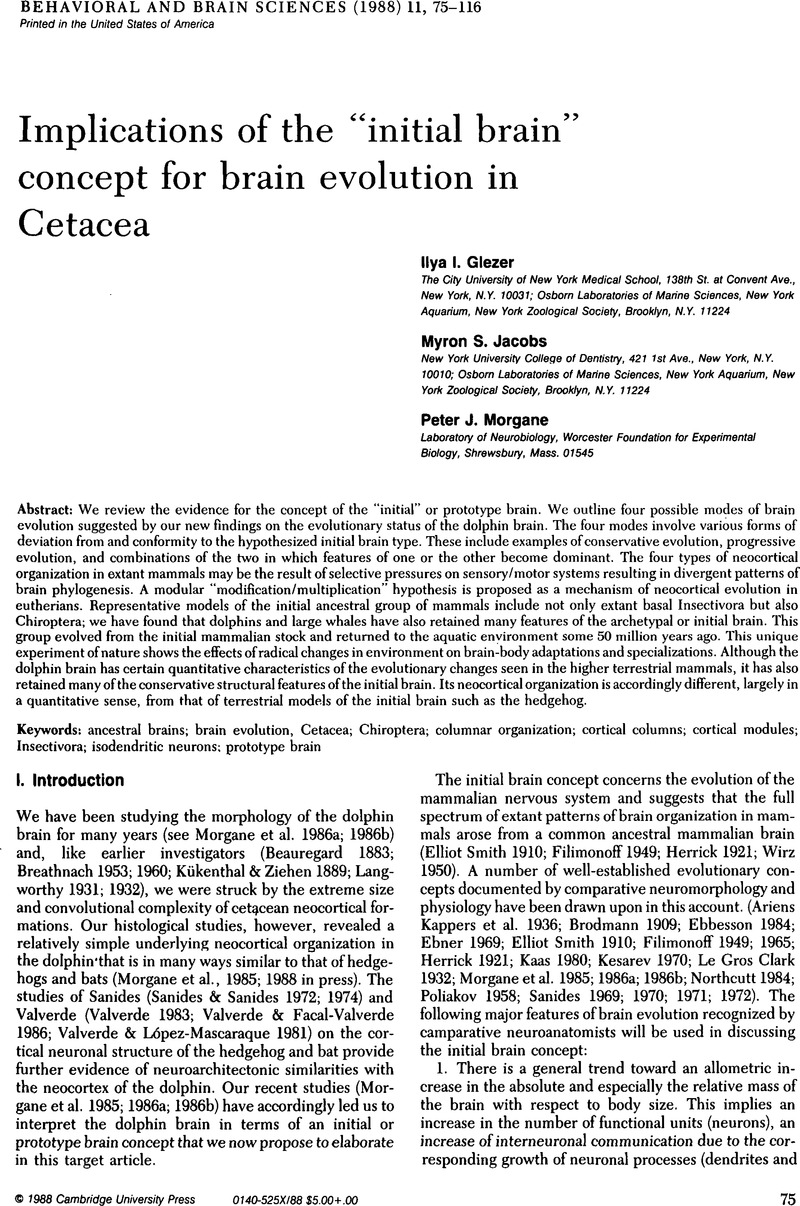Crossref Citations
This article has been cited by the following publications. This list is generated based on data provided by Crossref.
Glezer, Ilya I.
Jacobs, Myron S.
and
Morgane, Peter J.
1990.
Allometricks: Confusion about phylogenetic “progression” in brain evolution?.
Behavioral and Brain Sciences,
Vol. 13,
Issue. 1,
p.
187.
Deacon, Terrence W.
1990.
Confusing size-correlated differences with phylogenetic “progression” in brain evolution.
Behavioral and Brain Sciences,
Vol. 13,
Issue. 1,
p.
185.
Oelschläger, Helmut A.
1990.
Sensory Abilities of Cetaceans.
p.
137.
Ridgway, Sam H.
1990.
The Bottlenose Dolphin.
p.
69.
Miklos, George L. Gabor
1993.
Molecules and cognition: The latterday lessons of levels, language, and iac. Evolutionary overview of brain structure and function in some vertebrates and invertebrates.
Journal of Neurobiology,
Vol. 24,
Issue. 6,
p.
842.
Glezer, Ilya I
Hof, Patrick R
and
Morgane, Peter J
1998.
Comparative analysis of calcium-binding protein-immunoreactive neuronal populations in the auditory and visual systems of the bottlenose dolphin (Tursiops truncatus) and the macaque monkey (Macaca fascicularis).
Journal of Chemical Neuroanatomy,
Vol. 15,
Issue. 4,
p.
203.
Knudsen, Siri Kristine
Mørk, Sverre
and
Øen, Egil Ole
2002.
A novel method for in situ fixation of whale brains.
Journal of Neuroscience Methods,
Vol. 120,
Issue. 1,
p.
35.
Marino, Lori
Uhen, Mark D.
Pyenson, Nicholas D.
and
Frohlich, Bruno
2003.
Reconstructing cetacean brain evolution using computed tomography.
The Anatomical Record Part B: The New Anatomist,
Vol. 272B,
Issue. 1,
p.
107.
STRIEDTER, GEORG F.
2004.
The Human Nervous System.
p.
3.
Marino, Lori
2009.
Encyclopedia of Marine Mammals.
p.
149.
Ketten, D. R.
Arruda, J.
Cramer, S.
and
Yamato, M.
2016.
The Effects of Noise on Aquatic Life II.
Vol. 875,
Issue. ,
p.
529.



